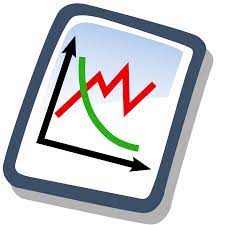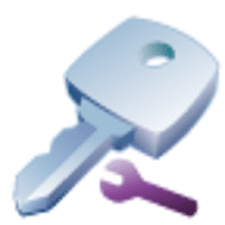
Gnuplot
Gnuplot For Windows 7/10/11 64-Bit Download
We have shared the latest setup of Gnuplot here and free download links are available for download. If you’re a data enthusiast or rely on numerical analysis for your work, then a reliable plotting software is a must-have in your toolkit. With the abundance of data visualization tools available, finding the right one can be a daunting task. However, if you’re looking for a powerful and versatile plotting tool that runs on Windows, look no further than Gnuplot.
Gnuplot is a graphing program that uses text-based commands to create and manipulate graphs. It is interactive, meaning that when you enter a command, the result appears immediately in the plot window.
Data sets are entered in text files, with the format determined by the set terminal postscript command. Lines beginning with the # character are considered comments.
1. Plotting Functions
Gnuplot is a program for drawing two- and three-dimensional functions and data on your workstation screen. It can also write PostScript-language plot files to disk that can be printed with laser printers.
From the command line, run gnuplot — or to start a non-interactive gnuplot session, type set term x11. Then, issue any plot commands.
2. Graphing Functions
Gnuplot is a portable command-line driven graphing utility that can visualize mathematical functions and data interactively. It is also scriptable and supports a large number of specialized plot types.
It is device-neutral in producing its output, and can change the terminal that it produces to using the set terminal command. It can also produce a postscript file for printing. It can draw a wide range of 2D and 3D graphs, including contour maps.
3. Symbols
Many aspects of gnuplot output may be configured with the set command. Examples include axis labels, title, and drawing style. Its ontfile add encapsulates the font definitions in a postscript font file directly into gnuplot output, enabling text to be included in the graphics. fontscale> scales font labels by a factor (default is 2). dashlength> scales dash lengths. rounded> enables rounded line caps and mitered joins.
4. Graphing Data
Gnuplot allows you to plot 2D and 3D data using a variety of formats, such as points, linespoints, dots, histogram type boxes, surfaces, vector fields and contours. It also supports a wide range of specialized plot types and animations.
When a data file is read, gnuplot expects one point per line with an independent variable and a dependent variable (or error bars). The optional command ‘-persist’ prevents gnuplot from closing after reading a data file.
5. Plotting Functions in 2D and 3D
Gnuplot is a free and portable command-driven program for drawing two and three dimensional graphs of functions and data. It runs on Linux, Mac OS X and Microsoft Windows PCs.
It produces postscript output which can be displayed on screen, printed or saved to file for inclusion in a document. Statements starting with ‘#’ are comments. The option plot_list() gives a list of all open plot windows.
6. Plotting Functions in Interactive Mode
Gnuplot supports an extensive command-line interface. It is similar to Matlab. The linesplot styles rounded, mitered and beveled control the shape of line joins. The solid option draws all plots with a solid line.
The set term xlib command directs gnuplot output to the X Window System terminal. X commands can also be awkardly executed with the! shell command. This allows you to hand in a string containing any system commands you wish to execute.
7. Plotting Functions in Text Mode
Gnuplot is a command-line program for drawing two and three-dimensional plots of functions and data. It can display multiple plots on one image and supports a variety of linear and non-linear coordinate systems, projections, geographic data reading, and curve fitting.
A new bind command allows defining hotkeys to activate pre-defined gnuplot commands when the mouse is clicked in an active plot window. See bind for details.
8. Plotting Functions in Image Mode
PNG and JPEG images are now supported using an external library. See png and jpeg. Gnuplot is now very device-neutral, it could care less whether the graph is going to be a preview on an X Window display or a ASCII-art version for a terminal. Options color and monochome control colors; rounded, mitered and butt control line caps and line join shapes.
9. Plotting Functions in Script Mode
Gnuplot offers looping constructs and the heredoc facility to support scripting. For example, you might want a script to scan multiple data sets and convert them all to plots, or you might use a heredoc command to make a graph from native arrays without needing to submit the values to gnuplot (see listing 11.1 below).
Sometimes when gnuplot blocks are executed in sequence odd results occur; for instance a title may persist or residual options from a previous plot will remain. These problems are avoided with the use of a reset at the beginning of each block.
10. Plotting Functions in Multi-Window Mode
Gnuplot can plot many different types of functions and data. Its main commands are plot, splot and replot. Several terminal types now support enhanced text mode (see set term x11). Most plot commands now accept modifiers to specify point and label styles, as well as font, size, rotation angle, etc. See label. Some terminals have grid features for 3D surface plots.
Gnuplot is a free and open-source command-line plotting utility that has been a staple in the scientific and engineering communities for decades. It was originally developed in the 1980s by Thomas Williams and Colin Kelley and has since evolved into a robust tool for creating high-quality graphs, plots, and charts.
Installing Gnuplot on Windows
To get started with Gnuplot on Windows, you’ll need to download and install the software. The installation process is straightforward:
- You. will. need to follow download links on this page
- Choose the appropriate installer for your Windows operating system (32-bit or 64-bit) and download the executable file.
- Double-click the downloaded file to launch the installer.
- Follow the on-screen instructions to complete the installation.
Once installed, you can access Gnuplot from the command prompt or by launching the program from the Start menu.
Generating Plots with Gnuplot
Gnuplot offers a wide range of plot types and customization options, making it flexible enough to handle various data visualization tasks. Here are some key features of Gnuplot:
1. Basic Plotting
Getting started with Gnuplot is as simple as typing a few commands. You can plot data from a file, enter it manually, or use mathematical functions to generate plots. Gnuplot supports various plot types, including line plots, scatter plots, histograms, bar charts, and more.
2. Customization
Gnuplot allows you to customize every aspect of your plot, from the axes labels and titles to the line styles and colors. You can adjust the font size, add legends, and even plot multiple datasets on the same graph. With Gnuplot’s extensive range of options, you can create visually appealing and informative plots that meet your specific requirements.
3. Scripting
One of the strengths of Gnuplot is its scripting capability. You can write scripts in Gnuplot’s own scripting language to automate the plotting process, making it easier to reproduce plots or generate multiple plots with different datasets. This feature is particularly useful when working with large datasets or when you need to generate plots regularly.
Conclusion
Gnuplot is a powerful plotting tool that offers unparalleled flexibility and customization options. Whether you’re a scientific researcher, an engineer, or a data analyst, Gnuplot can help you effectively visualize your data on Windows. The installation process is straightforward, and the software is free to use. With its extensive documentation and active community support, you can easily dive deeper into Gnuplot’s capabilities and take your data visualization to the next level.





